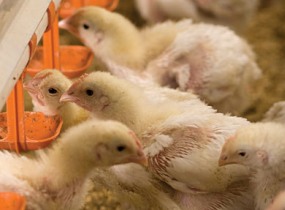USDA projects growth for livestock industry until 2019

The US Department of Agriculture has recently released its 10-year outlook, this time stretching to 2020. Further growth is expected, but in all livestock sectors strong figures as in the past years will not be reached.
What follows is an extract from this year’s USDA’s Agricultural Projections to 2019, published this month. Livestock projections can be found on the pages 79-87.
US livestock
The livestock sector continues to make adjustments in the first several years of the projections in response to high grain and soybean meal prices in 2007 and 2008, followed by weak meat demand caused by the global economic recession.
Production
With producer returns squeezed, production incentives fell, leading to declines in total US meat and poultry production through 2011. These production adjustments combine with strengthening meat exports to reduce domestic per capita consumption through 2012. The result is lower production at higher prices, which improves net returns and provides economic incentives for moderate expansion in the sector later in the projection period.
Poultry production fell in 2009 but is projected to rise the most among the meats over the next decade, as poultry is the most efficient feed-to-meat converter. Growth will remain below rates of the past decade.
Consumption and exports
Continuing near-term production reductions in the livestock sector, along with some recovery in meat and poultry exports, result in higher consumer prices and lower per capita consumption. Annual consumption of red meats and poultry falls from over 221 pounds per capita in 2004-07 to less than 206 pounds in 2012. As production increases over the remainder of the projection period, per capita consumption of red meats and poultry resumes growth, but only rises to about 215 pounds by 2019.
Due partly to higher feed conversion rates and a shorter production process, the poultry sector has adjusted faster than red meats to the combination of higher feed costs andreduced demand. As a result, poultry production is projected to resume growth in 2010. As producer returns improve, production strengthens further. Per capita consumption rises through the end of the projection period and, in contrast to red meats, surpasses levels of the past decade.
Price developments
After the price declines seen in the livestock sector in 2009, largely due to recession-related effects on meat demand, prices rise over the projection period. A moderate pace of expansion combined with improving domestic and export demand support prices in the projections.
Reduced demand resulting from the global recession lowered overall US meat and poultry exports in 2009 by more than 7%. After 2009, exports are projected to rise as global economic growth resumes and the US dollar depreciates. With this growth, exports account for a growing share of US meat use, although the domestic market remains the dominant source of overall meat demand.
After declining in 2009-11, US broiler exports rise through the rest of the projection period. Major US export markets include China and Mexico. Longer term gains in these markets reflect their economic growth and increasing consumer demand. Demand for poultry also remains strong because of its lower cost relative to beef and pork. US producers continue to face strong competition from other major exporters, particularly Brazil. For most of the projection period, exports from avian influenza-affected countries are expected to be limited to fully cooked products.













